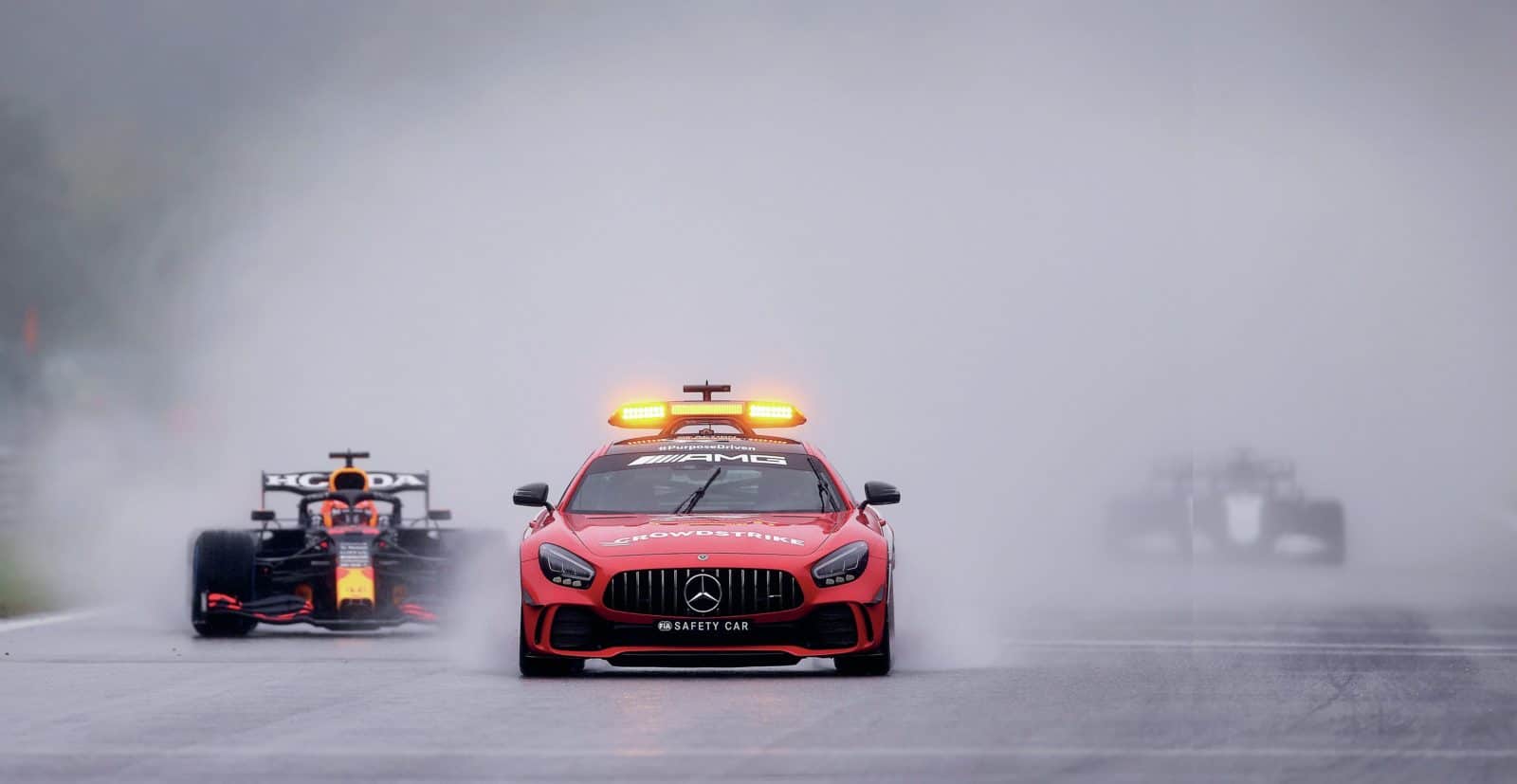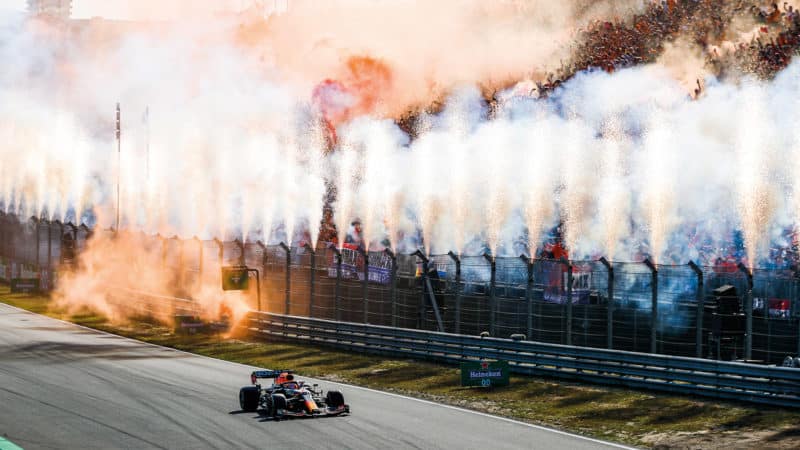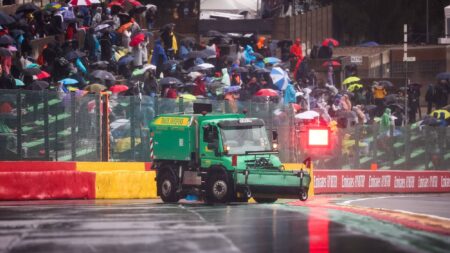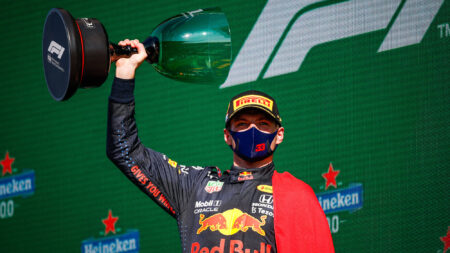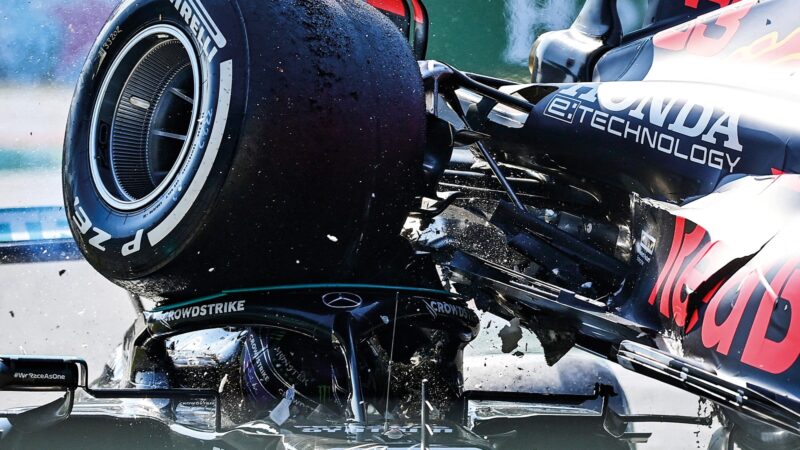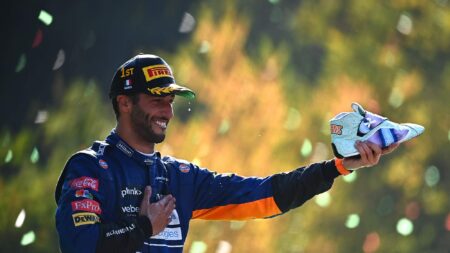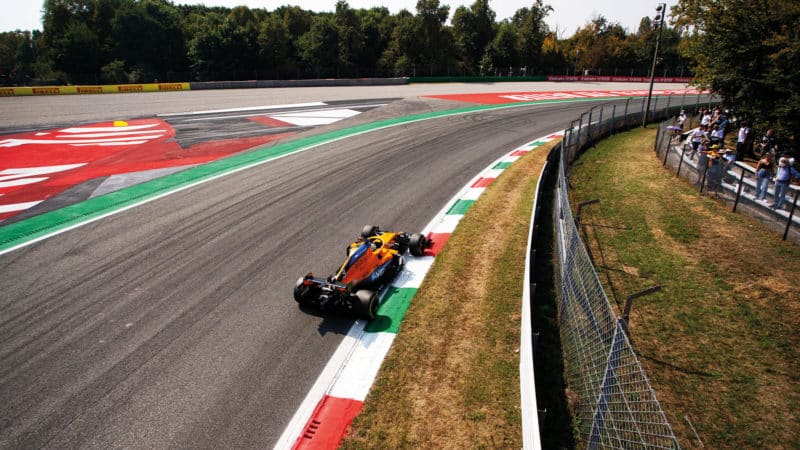“The findings, including the topic of points allocation, will be added to the agenda of the next F1 Commission meeting on October 5.”
That wet weekend was made a distant memory just a few days later with F1’s first visit to Zandvoort since 1985. Verstappen mania was intense even though a cap of 70,000 spectators had been imposed by the Dutch government as a Covid precaution. Every single one of them seemed to be in full party mode for the entire weekend and it was extraordinary to see a nation get behind a single driver in such an intensely exuberant way. Orange smoke shrouded the track every time his Red Bull appeared, football stadium cheers went up every time he did a lap to put him at the top of the timing screens. So it was very fitting that he should go on to dominate an event that his own success had essentially brought into existence around the reconfigured seaside circuit. Lewis Hamilton’s Mercedes kept the pressure on, but said afterwards he believed Verstappen, “Had just been toying with us. They were so fast this weekend.”
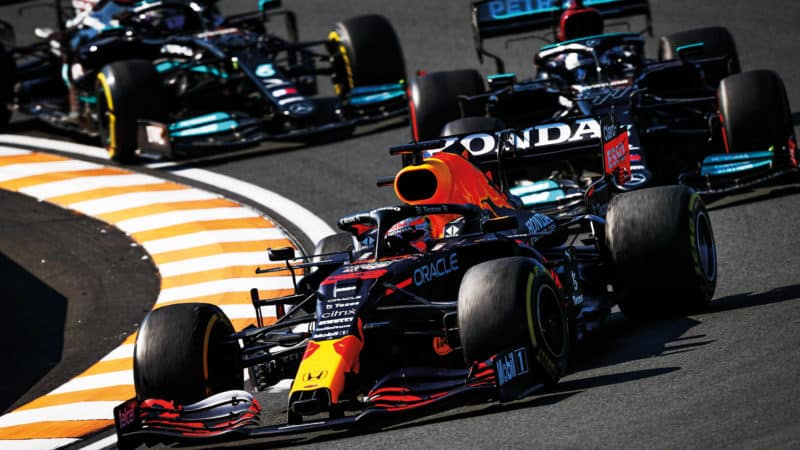
Verstappen was peerless in his Red Bull during Formula 1’s first visit to Zandvoort for over 35 years
Florent Gooden / DPPI
The biggest challenge faced by Mercedes was getting its car to work through the sequence of Turn 2/3 – the latter the now heavily banked Hugenholtz turn. The gradient of the banking is low at the bottom but rising up to 19 degrees in the top half. The fastest way was to go up high, with the outer wheels even beyond the white line, but the dynamics of the car in getting there were complex. If you were still scrabbling late on the exit of 2, you could not get over to the ideal right-hand approach for the banking. Furthermore the Merc was repeatedly scraping its front wing endplate through the banking and there was a genuine question of whether the car’s long wheelbase was proving a specific handicap. At no point in the weekend could Hamilton get anything closer than 0.18sec slower than Verstappen just through that short sequence. Which was the major chunk of the Red Bull’s lap time advantage. That banking definitely played its part in the fairytale outcome for the Dutch fans.
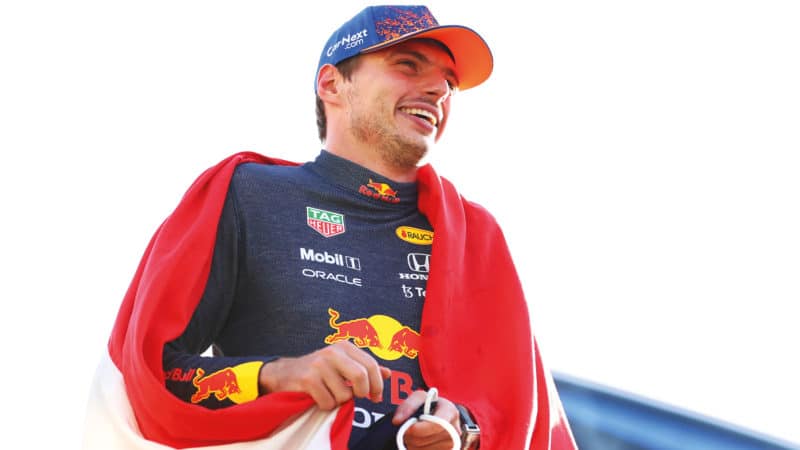
Verstappen was triumphant on home turf at Zandvoort
Dan Istitene/ F1 via Getty Images
Verstappen and Hamilton in their duel locked themselves into two-stop strategies while Valtteri Bottas in third set a more restrained one-stopping pace, a long way clear of the Pierre Gasly-led midfield battle in which the Ferraris and Alpines were also involved. The idea at Mercedes was to use Bottas to help put a strategic pincer on Verstappen, who was ensuring he was always just out of Hamilton’s undercut reach. No matter what Hamilton tried, Verstappen had the speed in hand to answer and so was able to respond a lap later to Hamilton’s first stop and still emerge ahead. This left the yet-to-stop Bottas in the lead and as Verstappen and Hamilton quickly closed him down on their fresh tyres, so there was possible opportunity for Bottas to delay the Red Bull and put Hamilton right on its tail. That is indeed what happened but Verstappen was able to make a clean pass on the leader at the beginning of the following lap. To the wild approval of the crowd, of course. From there he eased out of Hamilton’s reach once more.
As Hamilton initiated the second stops still with half the race distance to go, he was put onto medium tyres. Verstappen was put onto hards as he responded the following lap. With his initially faster tyres, Hamilton was able to slowly reduce the gap, though he suspected Verstappen would have performance in hand. The Red Bull driver indeed stepped up the pace. Just as Hamilton’s tyres began to fade. From that point onwards Verstappen was able to increase his lead every lap on his way to an historic victory, whipping the crowd into an orange frenzy. Hamilton made a late third stop, to at least take the fastest lap point. So close is this title contest, it could be decided on such small margins.
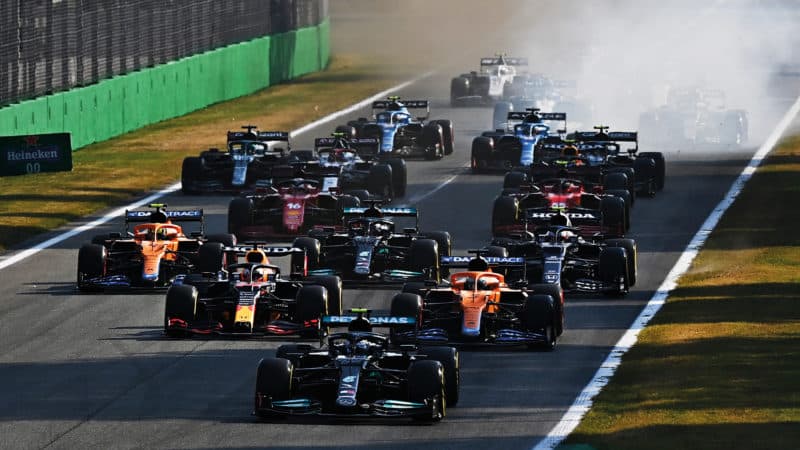
Bottas leads the Monza sprint
Clive Mason/F1 via Getty Images
Just as Zandvoort made Spa ancient history so, a week later, Monza did the same to Zandvoort. The long straights were perfect territory for the lower-drag Mercedes, something confirmed in Friday qualifying when Bottas and Hamilton locked out the front row for the sprint race, 0.4sec clear of Verstappen. It was already known that Bottas would be taking multiple grid penalties in the main race on Sunday for a new power unit and associated changes.
“McLaren secured its first victory in nine years and a 1-2 at that”
Which should have made the Saturday sprint race the perfect preparation for a Hamilton victory in the main event, by sitting him on pole.
But it didn’t work out that way. Hamilton made a disastrous wheel-spinning getaway on Saturday and was only fifth out of the first corner. Bottas led from start-to-finish, tailed throughout by Verstappen. Hamilton was unable to find a way past the fast-on-the-straight McLaren of Lando Norris and finished fifth, putting him fourth on the grid on Sunday, and behind two of those inconveniently quick McLarens. Verstappen would start from pole – which on the ultimate Mercedes circuit was a potentially hugely powerful swing in the championship.
